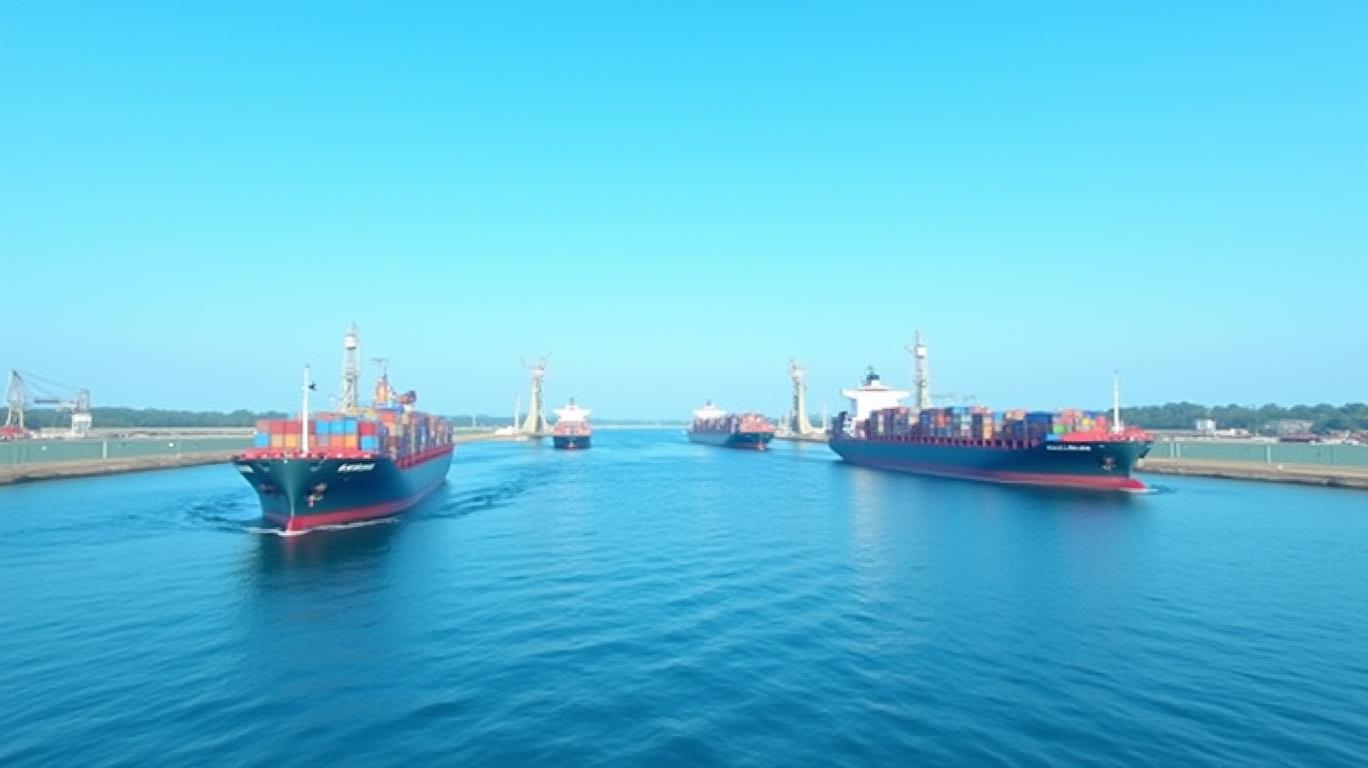Panama’s Delicate Balancing Act: Navigating US-China Tensions Without Capsizing Global Trade
The Panama Canal, a 50-mile shortcut connecting the
and Pacific Oceans, remains one of the world’s most critical economic arteries. Handling 70% of U.S.-related maritime trade, it is a linchpin of global supply chains. Yet, as U.S.-China competition intensifies, Panama finds itself in a precarious position: maintain neutrality to preserve its sovereignty or succumb to pressure from either superpower. The stakes are immense. A trade war over the canal could disrupt global commerce, redefine geopolitical alliances, and alter investment landscapes.
A Neutral Framework Under Strain
The 1977 Panama Canal Treaties and the 1999 Neutrality Agreement enshrine the canal’s independence, requiring equal access for all nations in peace or war. However, recent developments test this principle. The U.S. has grown alarmed at China’s growing influence in Latin America, particularly through Hong Kong-based Hutchison Port Holdings, which operates key ports adjacent to the canal. Meanwhile, Panama’s planned 2025 toll hikes—most notably a 200% increase in liquefied natural gas (LNG) tariffs over three years—have drawn sharp criticism from U.S. officials, including former President Donald Trump, who accused Panama of “extortion.”
The Toll Hike Controversy
Panama defends the toll hikes as necessary to fund infrastructure upgrades, including water conservation dams critical to sustaining the canal during droughts. The Panama Canal Authority, a sovereign entity, insists its decisions are market-driven. Yet, U.S. politicians argue the increases—particularly the 220% rise for empty containers—will worsen inflation and undermine American businesses. The dispute underscores a broader clash: U.S. demands for economic concessions versus Panama’s insistence on fiscal autonomy.
China’s Expanding Footprint
China’s Belt and Road Initiative (BRI) has deepened its ties with Panama, even after Panama’s 2024 exit from the BRI to appease U.S. concerns. Beijing has retaliated by blocking BlackRock’s $22.8 billion bid for Hutchison’s Panamanian port assets, citing national security risks. This geopolitical chess match has left Panama caught between two poles: a U.S. administration wary of Chinese influence and a Beijing eager to expand its strategic reach.
Regional dynamics further complicate matters. While U.S. allies like Colombia and Chile advocate for Panama’s sovereignty, others, such as Peru, are embracing Chinese-backed infrastructure projects, like the COSCO-funded Chancay port. This divergence reflects Latin America’s broader dilemma: balancing economic pragmatism with geopolitical alignment.
The Risk of Escalation
A military intervention by the U.S.—as permitted under its 1977 treaty reservations—could backfire spectacularly. Protests in Panama, including flag-burning demonstrations, reveal widespread public unease. A unilateral U.S. move would likely strengthen China’s regional influence and alienate Latin American partners. For investors, the risks are manifold:
- Supply Chain Disruptions: The canal handles 5% of global trade. A closure or prolonged dispute would spike shipping costs and delay goods.
- Geopolitical Volatility: Companies reliant on Panamanian infrastructure, such as LNG exporters or container lines, face currency and operational risks.
- Sovereignty Battles: Panama’s constitutional right to set tolls may deter foreign direct investment if perceived as unstable.
Investment Implications
The path forward hinges on diplomatic finesse. Panama must resist U.S. pressure to exclude Chinese firms while negotiating toll structures that satisfy investors. For investors, opportunities exist in:
- Infrastructure Projects: Financing the canal’s expansions or alternative routes, such as Colombia’s proposed interoceanic railway, could yield returns if geopolitical tensions ease.
- Shipping Firms: Companies with diversified routes or hedging strategies against toll hikes (e.g., Maersk, CMA CGM) may outperform peers.
- Regional Banks: Institutions exposed to Panama’s economy, like Banco Latinoamericano de Comercio Exterior (BLACEX), could benefit from stable trade flows.
Conclusion
Panama’s balancing act is a microcosm of 21st-century geopolitics: a small nation navigating superpower rivalry while safeguarding its economic lifeline. The 2025 toll increases and U.S.-China competition pose existential risks, but also opportunities for agile investors. A trade war would inflict collateral damage on global markets, with shipping costs rising by an estimated 15–20% if the canal’s neutrality falters. Conversely, a cooperative U.S.-Panama framework—one where tariffs reflect market realities and Chinese influence is managed—not only preserves the canal’s role as a neutral transit hub but also secures long-term value for investors. The world’s reliance on this slender strip of land demands nothing less.
The canal’s future, as much as Panama’s sovereignty, hinges on whether superpowers can prioritize shared economic interests over zero-sum rivalry. For now, the stakes—measured in dollars, geopolitical stability, and global trade—are too high to ignore.

Comments
No comments yet